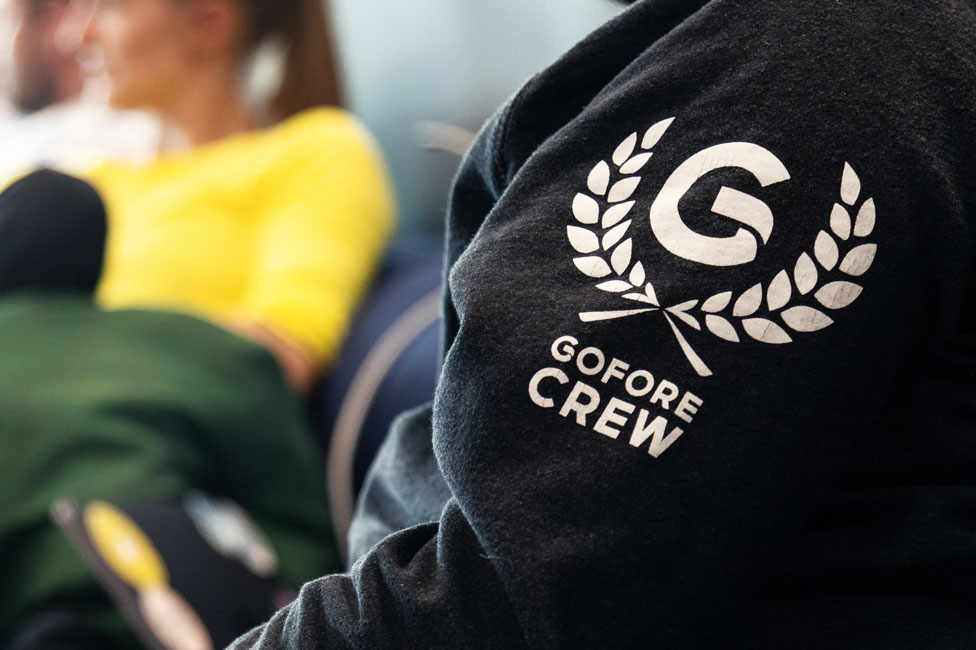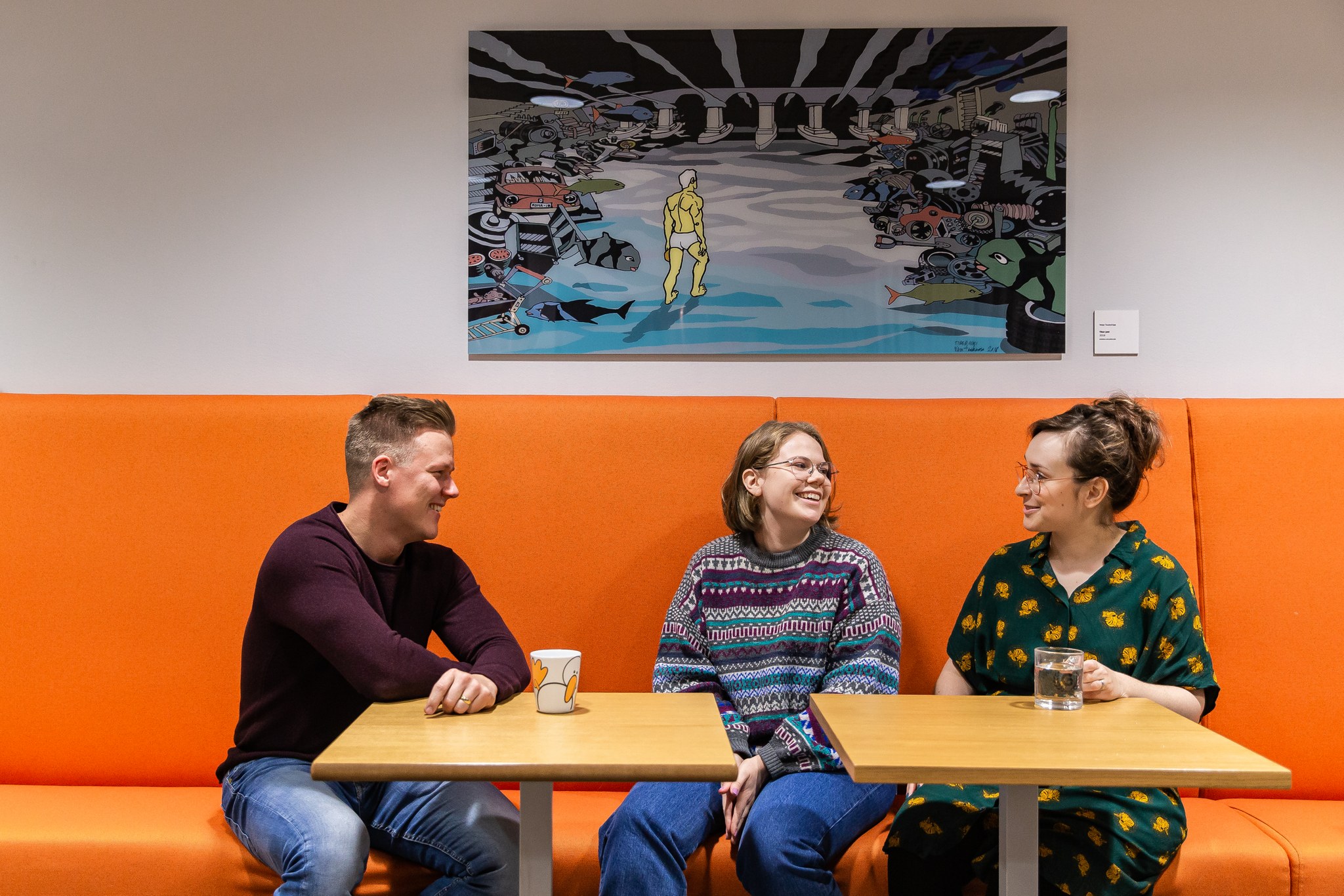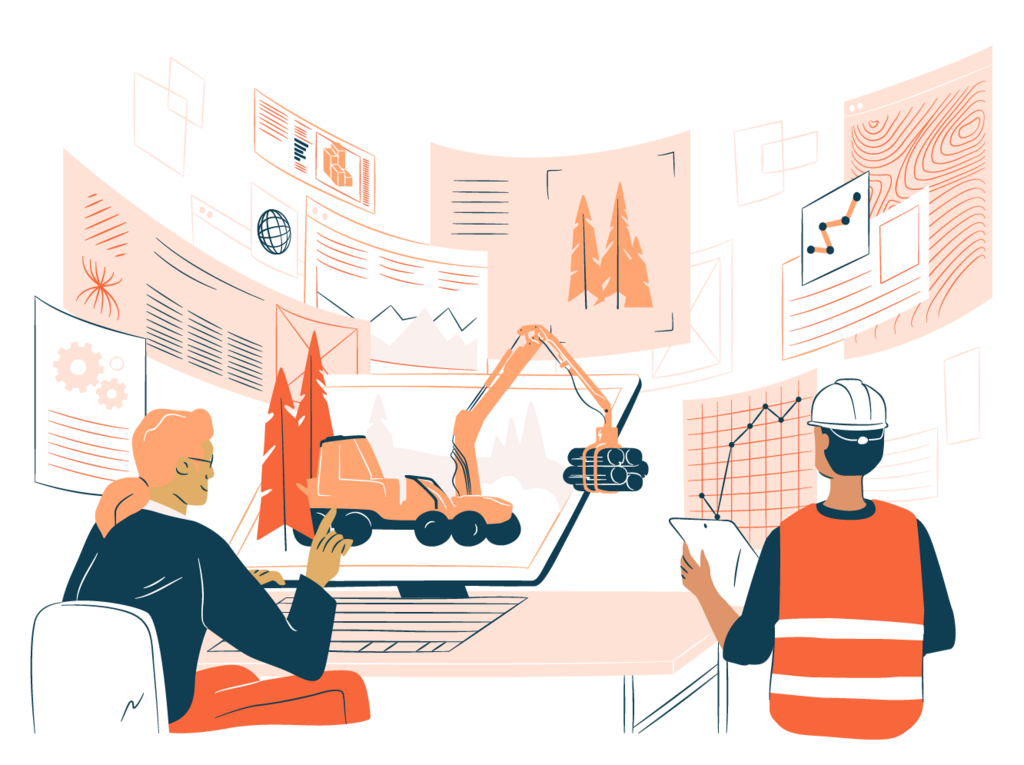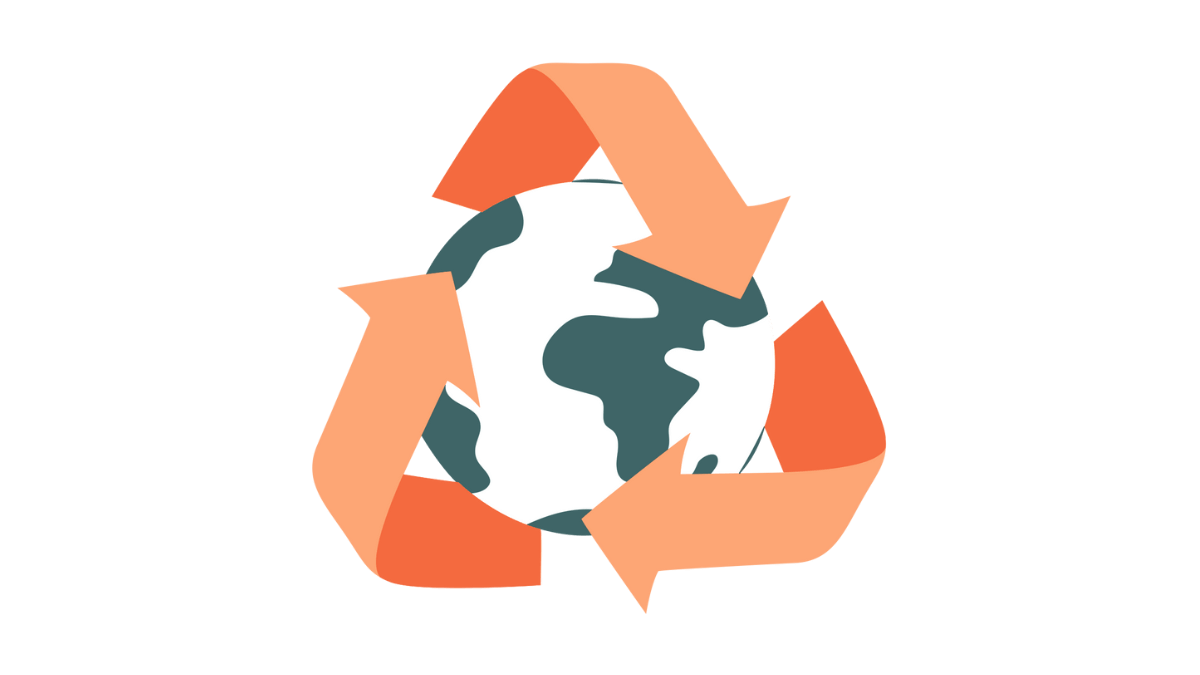Transparency is one of the key guiding principles for everything we do at Gofore. That’s why we want potential new Gofore crew members to have clear visibility into the recruitment process ahead. In this blog post, I’ll explain what the process is like for designers, and throw in a few tips for being at your best during it.
The process can slightly vary depending on your individual background and experience, but it typically consists of four stages:
- Initial application and portfolio review
- The first interview
- The second interview and design test
- Feedback and closure
There are always different people making evaluations in each stage. Having multiple evaluators helps us to ensure you get an objective and fair evaluation as a candidate. It also provides you with more opportunities to meet your future colleagues and get answers to any questions you might have.
1. Initial application and portfolio review
After receiving your application one of our recruiting professionals will go through your cover letter and CV. If your profile seems to fit what we’re looking for, they will forward your application to a designer who will then have a closer look at your portfolio. If your portfolio also receives a thumbs up, we’ll then proceed to invite you to the first interview.
2. The first interview
The next step in the process is a casual chat between you, a recruiter, and one of our designers. We’d like to hear a bit about what made you apply, what motivates you, and what kind of expectations you might have towards Gofore. We’re also interested in your general suitability for working as a design consultant, as well as finding out if you would be a good fit with our culture and values. This is where you’ll also get to hear more about life at Gofore and ask any questions you want. If it seems like you would be a good match, you will then proceed to the next phase.
3. The second interview and design test
The second interview is done by two designers who will focus more on your skills and competence. For Business Designers we might sometimes invite specialists from other fields to give their opinion as well (e.g., data analysts or management consultants). There might be areas of interest recognized in the first interview and we’ll now zoom in on those with more specific questions. The interviewers might have another look at your portfolio or ask more detailed questions about your ways of working. They might also just move on to the design test early on.
The design test
A big part of the second interview is doing a test with the interviewers. For UX and Service Designers it’s a design brief given in written format that usually goes along the lines of “design a service/website/app/whatever for purpose X”. For a Business Designer the test can be more of a case interview where you’re asked to solve a customer’s business problem. Sometimes there can be a few curveball factors thrown into the mix as well, but never anything you couldn’t handle. The exact duration can vary depending on the context, but typically you’ll have around 60 or 90 minutes to complete the task.
What we’re looking for during the test
Even though it’s called a test, it’s never simply about passing or failing. There can be as many right solutions to the same problem as there are designers, and the purpose is to gather more information about your ways of working. What we’re interested in is how you approach the task at hand. How you think and solve design problems, and what kind of methods, tools, or processes you might use. All this information will be used to complement your candidate profile to help us make a better decision at the end.
How to ace the test
To complete the test you’ll first need some sort of visual tool to explain your ideas. In a live situation this can be a whiteboard, some markers and post-its (we’ll provide those), or if you want to use a digital tool you can bring your own computer (or ask to borrow one before the interview). In a remote interview setting it’s good to use some sort of a digital design tool and then share your screen for the interviewers. If you don’t have any available, even a tool like PowerPoint is OK as long as you can communicate your design choices with it.
Some tips to keep in mind:
- The time is too short to produce a perfect end result. Communicating your main ideas with a concept-level description is enough. Just design as far as you can get within the timeframe. When the time runs out you’ll have an opportunity to explain what you would change or improve in a real-life context. Don’t worry if the end result isn’t a masterpiece; we have your portfolio as a reference to see what your finalized work is actually like.
- Think out loud. Getting insight into your way of thinking is one of the things we are interested in, but we can’t read your thoughts. Don’t be afraid to voice any raw ideas even if you’d discard them soon afterwards. Trying to explain the reasoning behind your design decisions as you go is also useful, as is writing a few notes here and there.
- Try to think beyond the tools at hand. Think how you would approach the task if it was given to you by a customer in real life. What information do you think you would need? How would you go about gathering it? Would you talk to someone? Would you ideate, draft, test things out, have a workshop, or do something else? What happens next? The task at hand is made up, so you can also use your imagination to come up with things you would need for proceeding with it.
- It can be a nerve-wracking situation. It’s not every day you need to design something with too little time and people watching. Just remember the interviewers are always on your side and want to see you succeed. If you get stuck they will help you out. It’s completely normal to be nervous and we always take that into consideration during the evaluation.
4. Feedback and closure
After the second interview is done we conclude with either sealing the deal or getting back to you with constructive feedback. If we think you’d be a great addition to the crew and you feel the same way, it’s time for a salary discussion. After agreeing on the salary, all that’s left is getting all the necessary paperwork done, ordering any devices you might need, and start getting settled in.
Until we meet another day
If for some reason our journey doesn’t continue together, we always do our best to provide you with constructive and useful feedback from the process. The goal is that we’ve at least been able to provide you with a useful experience that could provide you insight for your next career moves. Even if our stars didn’t align this time, you’re always very welcome to apply again sometime in the future.
We’re looking forward to receiving your application. If you’ve already applied, then good luck with the process! If not, have a look at some of our open positions, or leave an open application.



